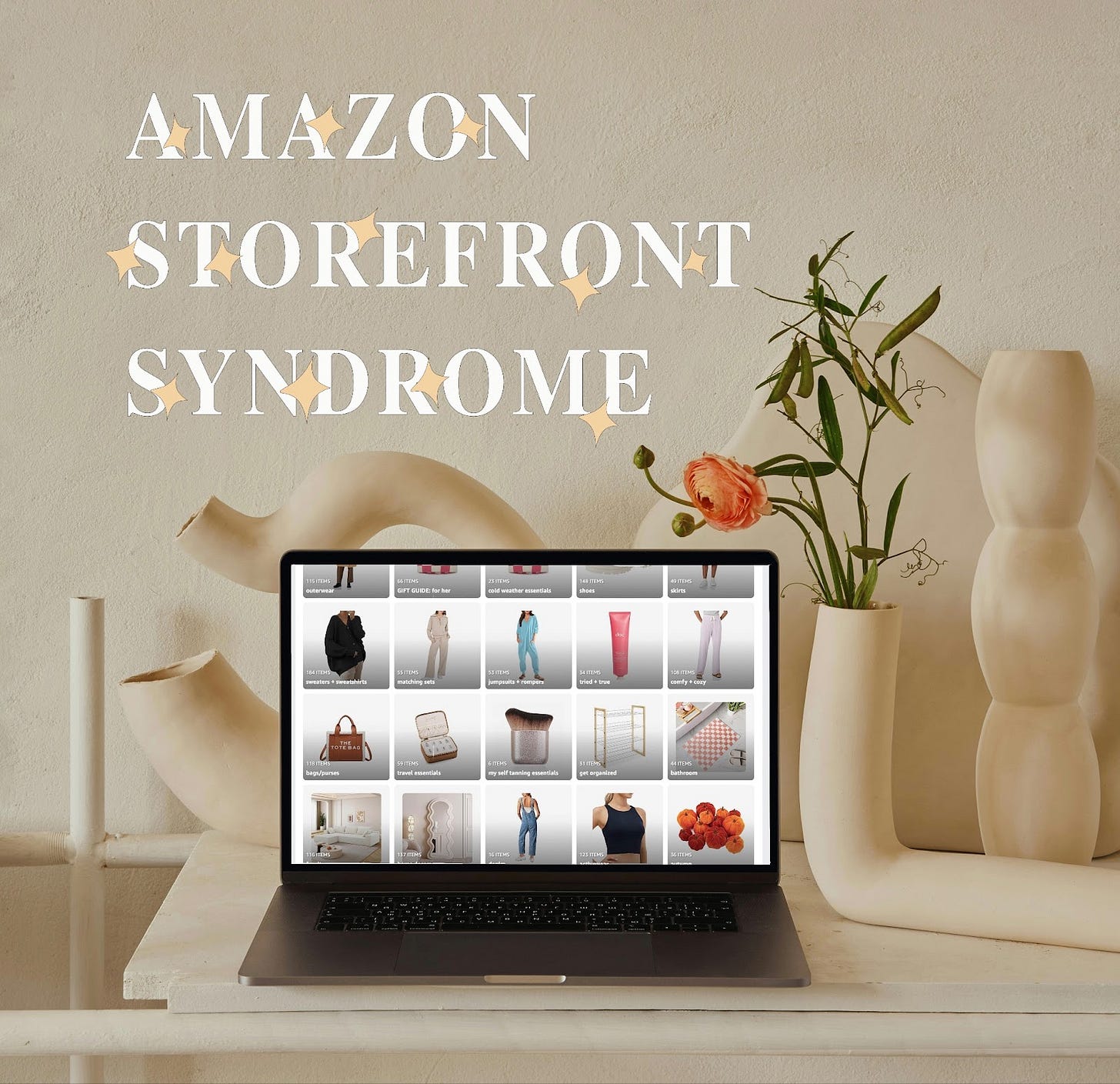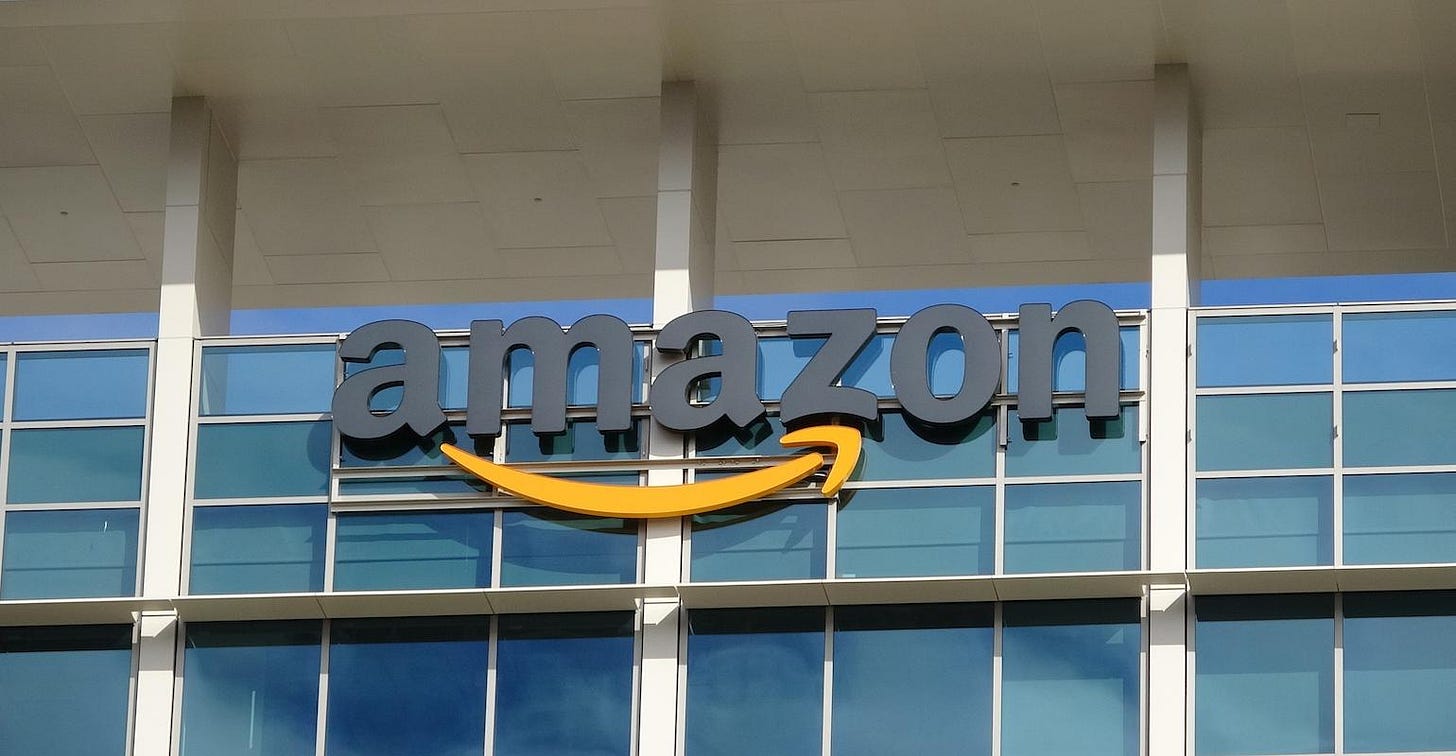Amazon Storefront Syndrome
Revealing the consequences of unhealthy shopping habits through the perspective of a recovering shopping addict.
Amazon— the colossal online shopping giant that we’re all obsessed with.
Julia, our guest writer, returns with an exploration into the captivating allure of Amazon hauls and the endless stream of fashion, beauty, and skincare products. She sheds light on the hidden dangers of this addicting shopping cycle, urging readers to consider the long-term psychological impacts of their excessive Amazon purchases.
Join us as she unravels the complexities of the “Amazon Storefront Syndrome” and sheds light on the often-overlooked consequences of unhealthy shopping habits.
Happy reading,
Amarissa
Unsurprisingly, e-commerce has become increasingly more popular in recent years. Brick-and-mortar stores have been disappearing due to the rise of online retailers such as Amazon, and the significant impact of these e-retailers on the fashion industry is undeniable.
Founded in 1994, Amazon has proved itself to be massively successful. In October of 2023, Amazon reported its financial results for its third quarter; “Net sales increased 13% to $143.1 billion in the third quarter, compared with $27.1 billion in third quarter 2022” (Amazon Quarterly results via Investor Relations).
Amazon has become the one-stop shop for anything you can think of, ranging from gardening tools to protein shakes to AirPods. Lost something? No problem, it’s on Amazon. Need a last-minute gift? Amazon. Forgot to buy dog treats at the grocery store? Amazon. With Amazon Prime’s quick shipping and delivery times (sometimes even as fast as overnight!), many consumers have been wooed by the online retailer’s offerings of ease and convenience in addition to its wide offering of merchandise.
The “Amazon Storefront Syndrome”
It is the sense of ease fostered by Amazon’s website that leads many of its customers down a rabbit hole of products they don’t necessarily need. At one point or another, we’ve all fallen victim to Amazon’s “suggested products”. The instant gratification that comes after clicking “Buy Now” is similar to that of an adrenaline rush; it leaves you craving more. With just one click, the instant gratification of an Amazon purchase sets in, and shopaholics rejoice.
This is a phenomenon I call the “Amazon Storefront Syndrome”, a dangerously addicting shopping cycle. However, many consumers rarely stop to think about the long-term dangers that Amazon presents, whether psychological or environmental.
What is an Amazon storefront? For those who are unfamiliar with Amazon, Amazon Storefronts are essentially a collection of products curated and endorsed by influencers and celebrities, typically influencers on TikTok. Many influencers (especially on TikTok) post massive “Amazon hauls”, creating content showcasing an enormous selection of fashion, beauty, and skincare products.
Whether the products are personal recommendations or viral tried-and-true luxury “dupes”, it may seem like an endless stream of products is at our fingertips. And with Amazon Storefronts on every influencer’s profile, there are infinite lists of categories, prompting the consumer to look through each and every one. Because if you like one of their recommendations, you’ll love the other ones, right? Regardless of whether you actually like or can even afford these products, you’ll feel a compulsive need to buy them.
The Art of Influencing
Ten years ago, there was no such thing as an “influencer”. Now, it can be a lucrative career choice for many content creators. From influencers with millions of followers such as Alix Earle and “Mr. Beast” to micro-influencers with a few thousand followers, the truth is that influencers hold more power over their followers than any celebrities or brands ever could. Why? Because the entire concept of influencers was built from a false sense of familiarity. Originally, people followed YouTubers and TikTokers whom they could relate to, enticed by a peek into the mundane events of these creators’ day-to-day lives.
However, social media content has quietly shifted into a form of marketing. The difference between mere creators and influencers can be identified through the presence of an Amazon Storefront, a catalyst for late-stage capitalism. In an era of mass consumption and a “buy, buy, buy” mentality, influencers subtly integrate themes of capitalism into their content while maintaining an air of relatability. How much are we as a society willing to let these influencers influence us? The answer lies in the psychology behind instant gratification.
Retail Therapy
Instant gratification is defined as the immediate fulfillment of a person’s needs or desires, yet its implications within shopping behaviors are surprisingly intricate. The term “shopaholic” carries a severity beyond common perception, it is a dangerous epidemic marked by impulsive purchases. These spontaneous buys are used as a quick fix to a deeper issue.
Influencers utilize Amazon Storefronts as a manipulation tactic, enticing followers to buy whatever they’re promoting in exchange for a commission under a veil of resonance. They carry out this practice by posting “What I got from Amazon recently” and “Amazon Hauls”, showing off hordes of products from Amazon and including a link to their Amazon Storefront in their bios. Upon opening these links, you are offered access to a ludicrously wide selection of merchandise, categorized into dozens of niche lists, catering to a broad audience.
Despite their attempt to appear relatable in their selection of merchandise, the intent to capitalize from their viewers is clearly evident in each of these posts. Yet, it works. It’s shockingly easy to scroll through these storefronts for hours at a time, entranced by the constant flow of goods. Shopaholics find themselves accumulating a basket brimming with newfound items they were unaware of just moments ago, now utterly convinced of their necessity, contributing to the development of lifelong unhealthy financial habits.
Fill Your Heart, Not Your Cart
Of course, like all forms of overconsumption, these storefronts are harmful to the planet as well as our wallets. Impulsive purchases usually end up in dumpsters and donation bins after one or two wears. Once the excitement of a package at your door wears off, reality sets in, and you realize maybe you shouldn’t have spent this week’s paycheck on a few cheap tops some random influencer on TikTok posted in their latest “Amazon Haul” instead of groceries. Eventually, after rotting for a few weeks, they’ll go from the bins to landfills, left to waste away for decades. Everyone needs a little retail therapy once in a while. But no one needs it every day.
Save your money and your planet and ditch your Amazon cart.
Final oversight & edits by Amarissa.
Today’s writer…
Julia is a participant in Fashion Talk's Winter ‘24 Student Writing Program. Aligned with our mission to uplift young voices in the fashion industry, we’re excited to share her fresh and insightful perspective with our community.
Get to know Julia here.
connect with us: IG → pinterest → twitter → bluesky










